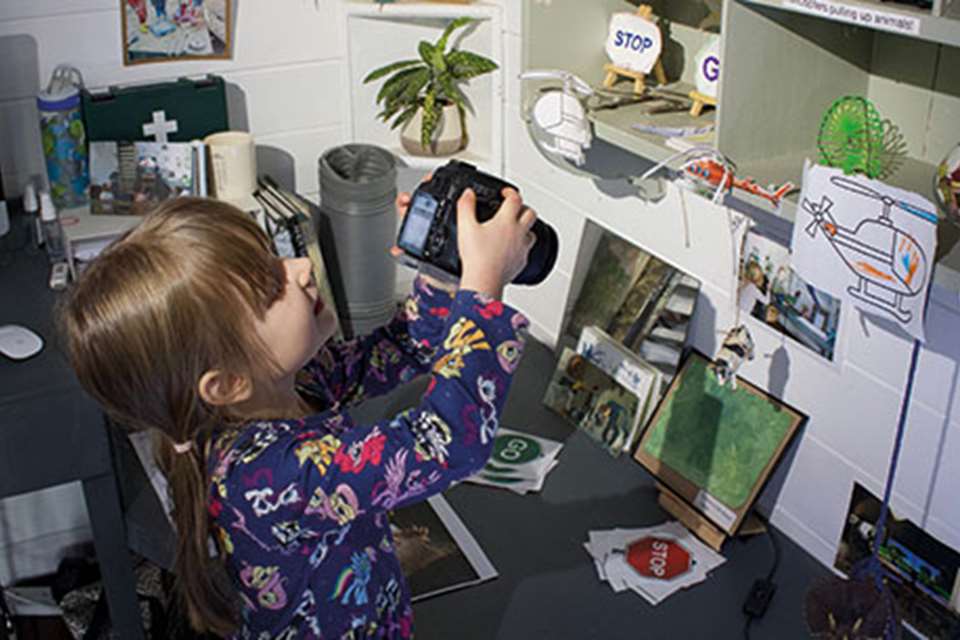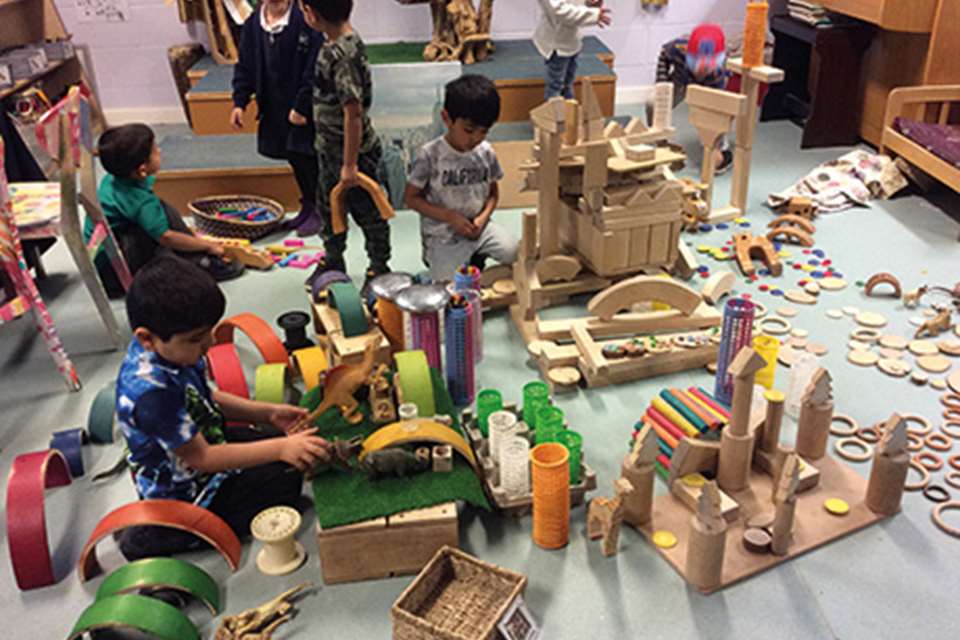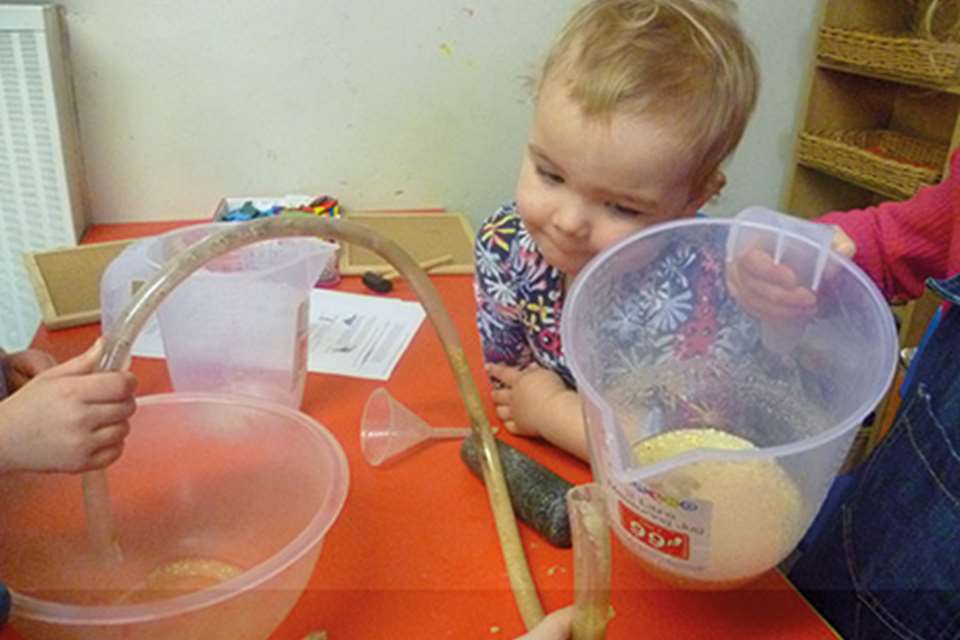EYFS Activities: We’ve explored… San Bushmen
Annette Rawstrone
Monday, August 19, 2019
What one outdoor setting discovered about the culture of hunter-gatherers in Africa. Annette Rawstrone reports
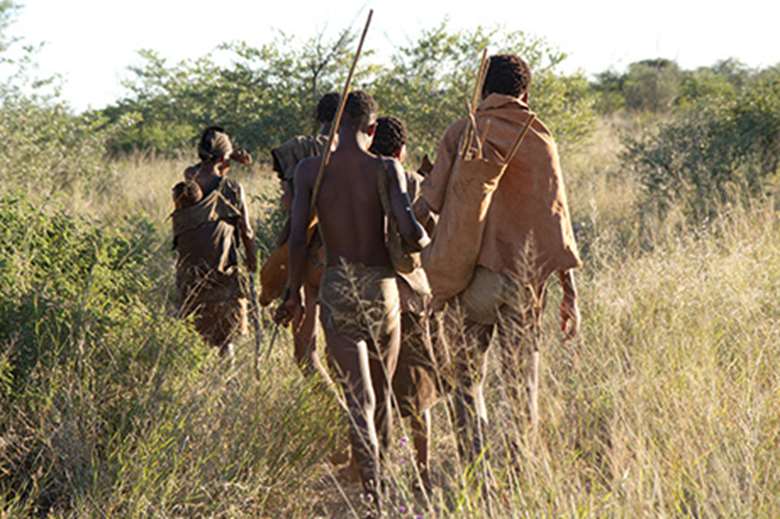
Download the PDF of this article
Exploring the way of life of the San Bushmen in southern Africa gave Reception children at Little Forest Folk’s outdoor settings in Wimbledon and Fulham, south-west London, the opportunity to learn about a culture that is very different from their own.
The focus was sparked by a child’s holiday stories. ‘One child, who had been to Tanzania, told us about seeing a leopard lounging in a tree with its prey, a gazelle,’ says Little Forest Folk co-founder Leanna Barrett. ‘This story prompted other questions about animals that live in Africa. We studied a map of Africa to locate Tanzania and one of our teachers pointed out Botswana, where she used to live. She described living on the salt pans and meeting the San Bushmen.’
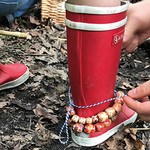 The children were excited to find out more and learned that San Bushmen are nomadic hunter-gatherers, with communities in the Kalahari Desert, which spans most of Botswana and parts of Namibia and South Africa. Older men are highly revered in the San Bushmen culture and they have no written language. The children were particularly fascinated by how they track animals and the clicks used in their language, which they repeatedly attempted to copy.
The children were excited to find out more and learned that San Bushmen are nomadic hunter-gatherers, with communities in the Kalahari Desert, which spans most of Botswana and parts of Namibia and South Africa. Older men are highly revered in the San Bushmen culture and they have no written language. The children were particularly fascinated by how they track animals and the clicks used in their language, which they repeatedly attempted to copy.
DESERT LIFE
The children then began to imagine what it would be like to live in the Kalahari desert, including how they would get their food when there are no supermarkets, and think how people in other parts of the world communicate and spend their days.
‘The children dashed out of our studio in search of sticks to act as spears as they pretended to hunt antelope and zebra,’ says Ms Barrett. ‘They also made up a few words for “go” and “stop”.’
In the garden, they went on a loud and imaginary hunt, prompting one teacher to point out that if they were too loud they would scare away all the animals. They also played a game requiring them to use all their senses like the San Bushmen. Two children were blindfolded – which heightened their sense of hearing – and pretended to be antelope. They had to listen carefully and point in the direction of any ‘hunter’ approaching. If they pointed in the right direction, the ‘hunter’ had to go back and start again.
‘At first, each “hunter” acted separately and made too much noise,’ says Ms Barrett. ‘Our children then figured out that they had to work as a team if they wanted to catch their dinner. They developed a strategy. One member would slowly approach the antelopes from the far side while the other children made wild animal noises to distract the antelopes. Their plan worked!’
The children enjoy experimenting and making things, so teachers introduced them to another San Bushmen skill: building a snare. Traditionally, they are made from natural cord, small sticks and a bendy branch, so the children searched around the studio and garden for resources. They settled on twine, thin stalks from pampas grass, and rubber bands were substituted for the bendy branch. ‘They learned how to create tension and a trigger mechanism,’ says Ms Barrett. ‘They practised throwing sticks and a stuffed animal to release the trigger. The children enjoyed testing how much tension to use when setting the snare.’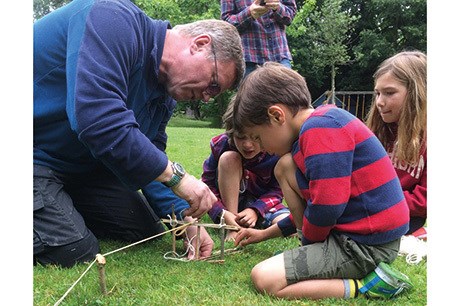
STORYTELLING
One day while gathered in a circle for a snack, practitioners told them how the San Bushmen sit cross-legged or crouching for hours around the fire as they share stories or perform trance dances.
‘We decided to work together to build a fire and see if it inspired any storytelling or magic. The children searched around the garden for dry tinder and kindling, which was a difficult task after all the recent rain. They collected pampas grass and dead wood and learned how to make paper doughnuts to encourage the fire to light,’ says Ms Barrett.
‘Each child took turns using a magnesium fire-starter. It was hard work, but with determination they persisted in getting a spark to light their piece of cotton wool.’ They discussed the importance of friction for creating heat and how the San Bushmen rub pieces of wood together to light their fires. Teachers had previously supported the children to make fires and were pleased to observe how they demonstrated their understanding of fire safety, the technique needed and the science behind it.
The children recalled an earlier experiment with copper chloride, which turns flames green, and decided to do it again as they discussed how the San Bushmen use fire to help them to drift into culturally important trance dances.
‘The children were mesmerised by the dancing green flames and used the experience to story-tell and discuss trance dance magic and culture around the fire. It was a magical experience to watch the children work together and persist in lighting a fire in drizzly conditions, then explore with such depth an alternative way of life,’ says Ms Barrett.
ROCK ART
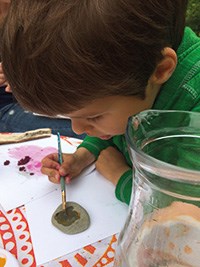 The following day during snack time they discussed San Bushmen art and food, and a teacher mentioned that cauliflower does not grow in the Kalahari Desert and questioned what sorts of plants the San Bushmen might gather and use them for.
The following day during snack time they discussed San Bushmen art and food, and a teacher mentioned that cauliflower does not grow in the Kalahari Desert and questioned what sorts of plants the San Bushmen might gather and use them for.
One child remembered learning about Stone Age hunter-gatherers and said, ‘They would kill a mammoth. Eat the remains and use blood to paint.’ They looked at San Bushmen rock art and found that they did indeed use animal blood for paint, along with ochre and charcoal.
Contemplating whether they could also use plants for paint made the children think about going foraging on an adventure walk and trying this theory out by using various plants to paint.
The project enabled the children, says Ms Barrett, to make ‘links between the San Bushmen culture and their own lives, using learned knowledge to stimulate their own ideas and thinking. Our snare- and tool-making required a lot of persistence and focusing for long periods of time, involving trial and error before achieving success, as did our attempts to light a fire on a damp day.’
She believes the children will use their new knowledge about human diversity to begin understanding people whose culture differs from their own and respect them.
The children have continued to return enthusiastically to the theme. ‘Most of their role play over the past few weeks has seen them hunting in a pack or acting out the hierarchy of the Bushmen society,’ Ms Barrett says. ‘We’ve also returned to snares and building tools for hunting, in addition to chanting rhythm songs. This has further opened up a fascination with other cultures, with lots of wonderings about the cultural habits of other societies.’
BOOK CORNER
Fiction
 Lila and the Secret of Rain
Lila and the Secret of Rain
by David Conway and Jude Daly
Lila is worried because the sun has burned down on her Kenyan village for months. It is too hot to gather firewood, too hot to weed the garden, even too hot to milk the cow, so she tells the sky the saddest thing she knows.
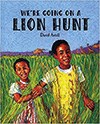 We’re Going on a Lion Hunt
We’re Going on a Lion Hunt
by David Axtell
Through the long grass, the swamp and the lake, two girls decide to hunt a lion. They’re not scared as they meet lots of magnificent animals in this African retelling of the classic story.
 Mama Panya’s Pancakes
Mama Panya’s Pancakes
by Mary and Rich Chamberlin and Julia Cairns
Mama Panya’s son Adika invites everyone he sees to a pancake dinner. How will she feed them all?
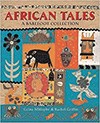 African Tales: A Barefoot Collection
African Tales: A Barefoot Collection
by Gcina Mhlophe and Rachel Griffin
Eight traditional tales of bravery, wisdom and wit from all over Africa, with hand-sewn collage artwork.
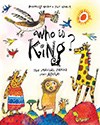 Who is King? Ten Magical Stories from Africa
Who is King? Ten Magical Stories from Africa
by Beverley Naidoo and Piet Grobler
Find out what happens to Lion when he challenges Elephant; laugh along with Tortoise as he bewitches the other animals; and find out why Hippo has no hair.
Non-fiction
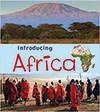 Introducing Africa
Introducing Africa
by Chris Oxlade
Where is the Sahara Desert? What is Africa’s highest mountain? Where do elephants live? This book answers these questions and more as it introduces children to the continent of Africa through maps, photographs and text.
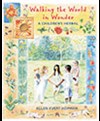 Encyclopedia of Herbal Medicine
Encyclopedia of Herbal Medicine
by Andrew Chevallier
Learn how to grow, harvest and process your own ingredients to create natural remedies along with the folkloric use of plants.
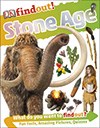 DKfindout! Stone Age
DKfindout! Stone Age
by Klint Janulis
Find out how early humans hunted a woolly mammoth, made fire and created cave paintings in this fascinating book.


